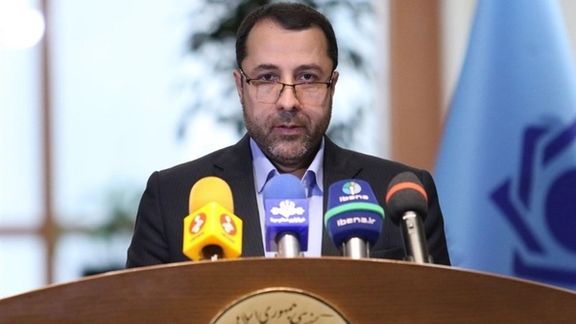As Iran’s Currency Dips, Central Banker Tries To Calm Markets

As Iran’s currency fell to its lowest exchange rate in 12 months, the head of Iran's Central Bank said foreign currency reserves had shot up over the past year.

As Iran’s currency fell to its lowest exchange rate in 12 months, the head of Iran's Central Bank said foreign currency reserves had shot up over the past year.
On Monday, the rial reached 310,000 against the United States dollar in the open market, bringing the rial’s fall to 25 percent since President Ebrahim Raisi (Raeesi) took office in early August.
"Our circumstances regarding availability of foreign currency for the country are very good and I expect the situation to improve in the near future," Ali Salehabadi, the CBI governor told reporters, in an apparent bid to calm the foreign exchange market since the latest round of nuclear talks with world powers ended Friday with no breakthrough.
Salehabadi said that Iran's access to foreign currency had improved since the beginning of the current Iranian calendar year in late March, paying for $36 billion of imports.
Salehabadi told reporters that since the beginning of the current Iranian year in late March $22.4 billion in non-oil export revenues were repatriated, which he said was a 45 percent year-on-year increase. Iran’s oil exports, mainly to China, have considerably increased since late 2020 from around 200,000 barrels per day to more than 600,000.
Iran has three government-regulated foreign currency markets, including both the exchange system for exporters and importers known as NIMA and licensed exchange bureaus, where individuals, companies and government bodies can purchase foreign currency, based on approved documentation.
The official rate for licensed foreign exchange bureaus Monday announced by the Melli Iran Exchange Company, which sets official rates daily, remained at under 279,000, at least 30,000 less than the street rate for paper notes.
The CBI governor assured exporters that there was no impediment to bringing revenues into the country in the form of paper notes and that they could readily sell foreign currency through government exchange mechanisms, albeit at a lower rate than on the open market.
According to Salehabadi, exporters had this year (since March 21 2021) exchanged $20 billion through the NIMA system, a 70 percent increase on the same period last year.
"Over $100 million is daily exchanged in the official NIMA market, 70% more than last year," Mostafa Ghamari-Vafa, the head of the CBI's public relations, tweeted Sunday.
The Iranian currency has fallen almost tenfold since early 2018, when it became apparent that then-president Donald Trump would withdraw the US from the 2015 nuclear deal, the Joint Comprehensive Plan of Action (JCPOA), and impose sanctions on Iran. Under ‘maximum pressure’ Washington threatens to sanction third parties buying Iranian oil or dealing with its financial sector, which has deprived Tehran of foreign-currency revenue.
Since then, the government has resorted to printing money to finance its budget deficit, leading to a fourfold increase in liquidity, growth in inflation, and the weakening of the national currency.